“In the roots of snowboarding, duct tape was a part of snowboard technology.”
Gwyn Howat
If you don't know already, I'm a snowboarder. More than once, I've postponed a blog post because I was off at
Mammoth Mountain, dropping in off Cornice, seeing if I could carve "just a little bit higher up" this time.
This post, is dedicated to a real life engineering lesson I learned while riding the many trails up and down that big Sierra Nevada resort.
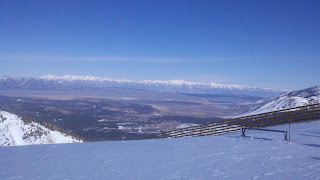 |
| Taken from the top of Chair 3 at Mammoth Mountain. What a view! |
I currently have two different boards I use, and the lesson I learned was about the differences between the two different styles of bindings each board has.
One board came with the bindings as part of a "package deal". The other, I chose based on the recommendations at the store where I bought them.
By first board has traditional, "two strap" bindings. Two straps cross your foot, and are ratcheted tight with two small levers. This is probably the most common binding you'll seen a snowboarder using.
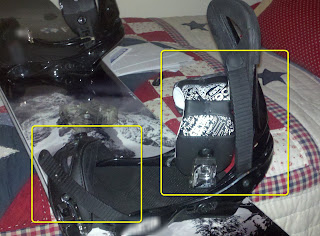 |
| My "two strap" bindings. The loose straps are circled in yellow |
I like them because their easy to adjust. If they're too loose, just reach down and crank the lever. If their too tight, release the lever.
Of course there's a downside. You may not have the exact same setting every time you get off the lift, based on how tight you lock them. On top of that, they take a little time to get locked down. So my skier friends are often waiting for me impatiently.
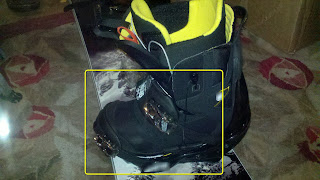 |
| The straps, circled in yellow, securing my boot. |
My second board, has "rear entry" bindings. In this type of binding, the high back (rear portion of the binding) drops down and you literally "step into" the binding. The binding is secured by securing a lever that locks the binding to the back of your foot.
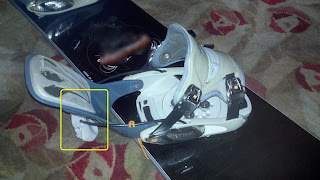 |
| The rear entry binding in the "open" position. Notice how the stiff back lays down so you can step into it. The locking lever is circled in yellow |
|
My skier friends (as well as myself), like this binding because it's quick. I can get of the lift, step into the binding, throw the lock closed, and I'm ready to go. No fussing with straps like in the traditional, two strap binding.
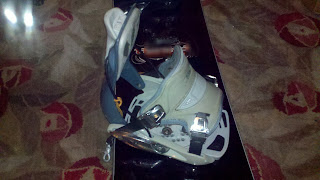 |
| The rear entry binding in the locked position. |
With that being said, would this be the better binding?
Some would say. But this binding isn't easy to adjust on the fly like my "two strap" style binding. Because of the design of the "rear entry" style, adjusting the binding means taking off the board, tweaking the binding, and trying it again.
So why have I even taken the time to write this? You may not like snowboarding. Maybe the closest you come to the snow are the ice cubes in your favorite drink.
I'm not catering to tell snowboarders to go buy one type of binding over the other. I'm not even going to tell you which ones I prefer. That's not the point of this post.
The point is how I relearned a lesson that experience has taught me before.
You don't get something for nothing.
My "easy to adjust" two strap bindings means more time getting ready after getting off the lift. My "faster off the lift" rear entry bindings mean I have to take extra time setting everything up, which I'm still working on after purchasing new boots.
In other words, each design had to give up something to gain advantages somewhere else.
In this case, it was ease of adjustment versus speed. But that's not the only things that could be facing off when designing a product there are a few examples of design "ying and yang".
It could be:
- Gaining a technological edge but making a product more difficult to maintain
- Increasing a product's longevity by using materials that are more expensive
- Increasing product's capabilities but making it more difficult to use
That's the idea. Of course this list goes on and on.
But the point is, design isn't always about making something better in every aspect. Many times, something has to be sacrificed for a gain to be made elsewhere.
Is this bad? Not necessarily. It's just a fact of life. As designers, we have to try to maximize the gains while minimizing the losses required to make those gains.
As consumers, we need to recognize what capabilities are important, and which are not.
It's not always an easy answer, even as we face it every day. For me it's which set of snowboard bindings. But for others it could be a computer operating system, an economical car versus an SUV, the list goes on and on.
It's for each of us to decide, both when we design, and when we employ the design created by another.
I know for me, I'll think a little more carefully about which set of snowboard bindings I use!



















































